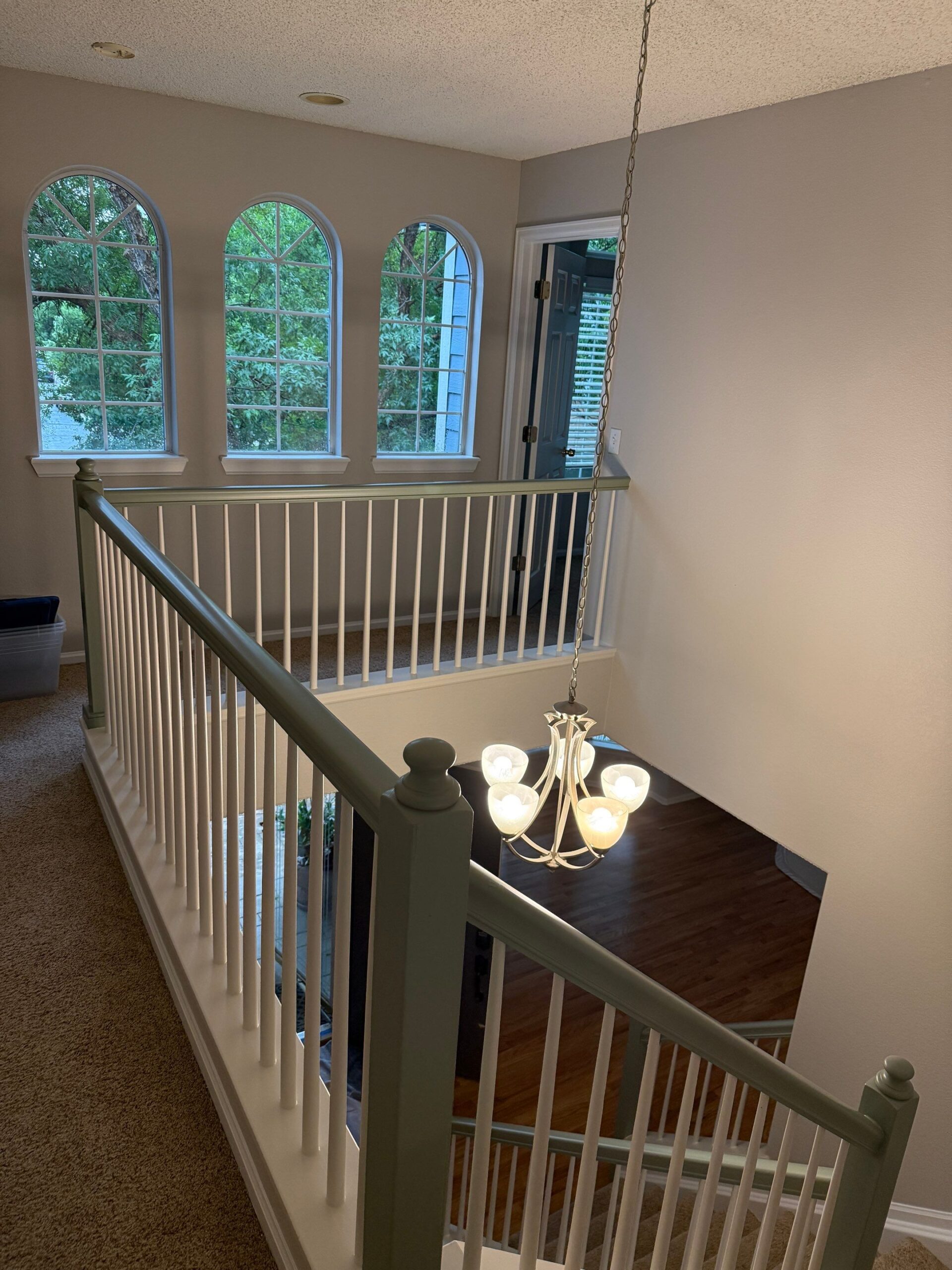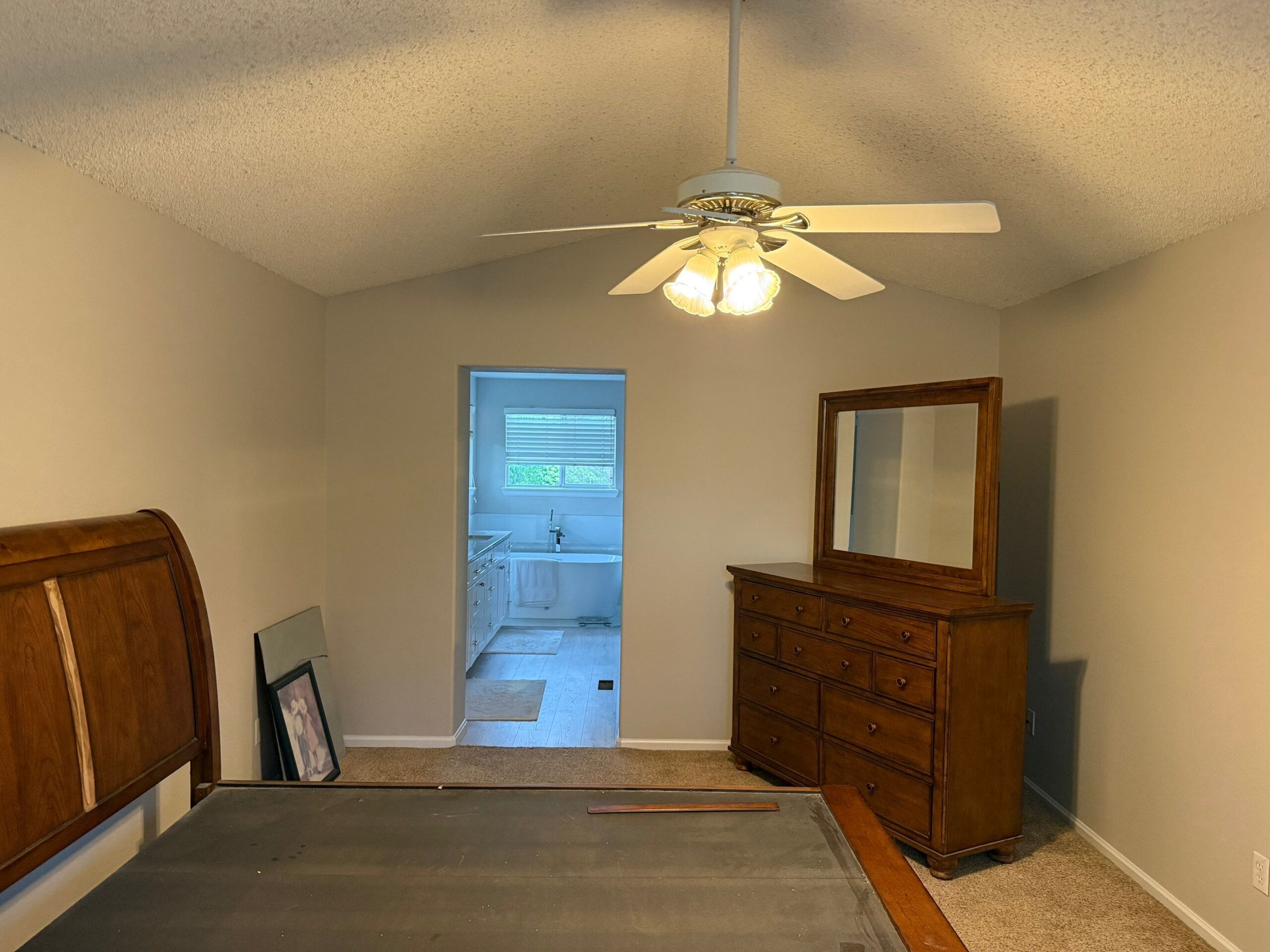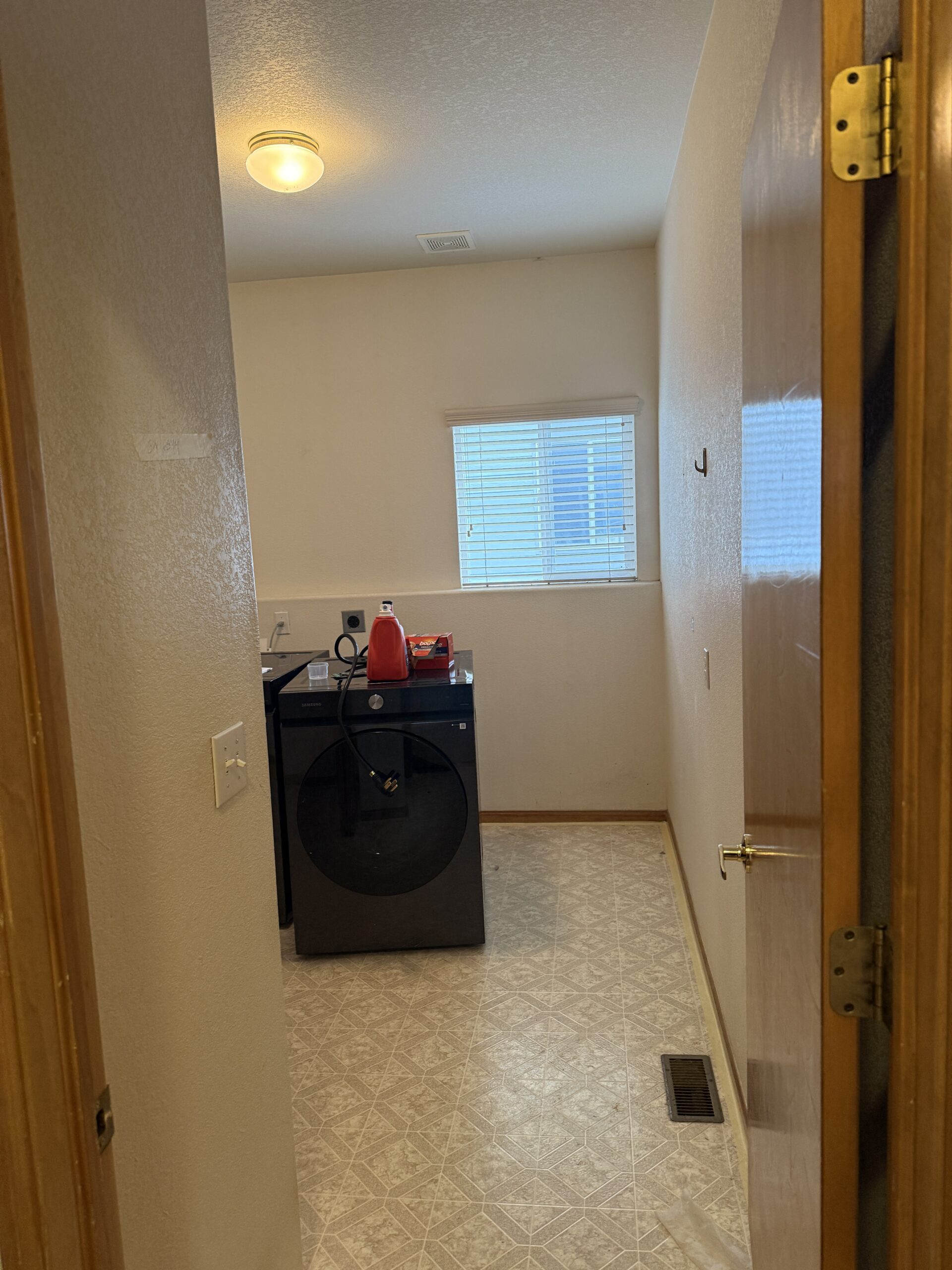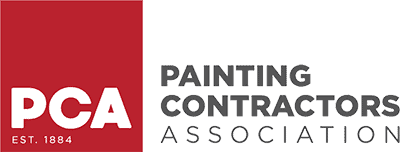Even the best paint can’t hide a poorly finished wall.
Tape lines, texture inconsistencies, and patch flashing are among the most common drywall finishing issues that compromise both aesthetics and paint durability. These problems are especially visible under natural light, glossy finishes, or after repainting—when it’s too late to easily fix them.
These aren’t just cosmetic flaws. They reflect deeper issues in drywall preparation, and if left uncorrected, they can lead to premature paint failure, uneven finishes, or repeated maintenance calls—especially in rental or commercial properties.
This blog outlines the causes of each defect, how to detect them before painting, and most importantly, how to repair them for a flawless, professional-grade finish. Whether you’re a property owner, project manager, or professional painter, understanding these finishing issues will save you time, money, and frustration.
What Are Tape Lines, Texture Inconsistencies, and Patch Flashing?
Tape Lines
Tape lines refer to visible seams where drywall tape was applied to join two drywall sheets. When properly done, tape lines should be invisible under paint. But when tape isn’t embedded fully or the joint compound isn’t feathered smoothly, these seams show up prominently—especially with side lighting.
Main causes include:
-
Insufficient joint compound over the tape
-
Poor feathering technique
-
Inadequate sanding or skipping primer
The result? Linear ridges or shadows that persist through the final paint coat.
Texture Inconsistencies
Texture inconsistencies happen when patched or repaired sections of drywall have a different texture than the original surface. This creates noticeable transitions in wall appearance—even if the color match is perfect.
Common causes:
-
Over- or under-sanding repaired areas
-
Using different application tools or joint compound
-
Attempting to texture small areas instead of feathering into existing texture
Orange peel, knockdown, or trowel finishes are especially vulnerable. Even slight variations are obvious once painted, especially under raking light.
Patch Flashing
Patch flashing refers to visible outlines or sheen differences around repaired drywall areas after painting. These patches might appear shinier or duller depending on how they absorb primer and paint.
This happens when:
-
Patched areas are more porous than surrounding surfaces
-
No primer was used before topcoating
-
A different sheen or paint type was applied to the patched area
Patch flashing is a sure sign of skipped prep steps—and it always draws the eye in an otherwise smooth wall.
Why These Issues Matter Before Painting
Visual Impact on Final Paint Appearance
Poorly finished drywall shows through even the highest-quality paints. Shadows from tape lines, uneven textures, or flashing create distracting surfaces that diminish the professional look of a space.
Especially in high-end homes, commercial interiors, or newly renovated rentals, even one visible seam or patch can ruin the clean, cohesive appearance property owners expect.
Effect on Paint Durability
Beyond aesthetics, improper drywall finishing undermines paint performance:
-
Uneven surfaces collect dust and dirt more easily
-
Poor adhesion increases the risk of chipping or peeling
-
Repairs become more frequent, adding to maintenance costs
Skipping finishing fixes before painting can cut the effective life of your paint job in half.
Diagnosing and Preparing for Repairs
Inspecting Walls for Tape Lines and Texture Issues
Proper inspection is critical before priming or painting. Use both natural light (daylight) and raking artificial light to spot tape lines and texture changes.
Run your hand along the wall. You’ll often feel a raised seam or rough patch before you see it.
Look for:
-
Ridges or depressions at seams
-
Surface dullness or excess sheen
-
Texture variations between original and patched areas
Identifying Patch Flashing Areas
Flashings may only become visible after primer or paint is applied. To check beforehand:
-
Lightly mist the wall with water—dull, blotchy absorption indicates porosity differences.
-
Use a halogen or side-angle light to spot texture sheen changes.
-
After priming, check for gloss variations or visible outlines. If any are present, spot repairs or full skim-coating may be necessary.
Step-by-Step Repair Techniques
Fixing Tape Lines
The goal is to eliminate raised edges and create a seamless transition.
Steps:
-
Sand down the raised tape edges lightly using a 120–150 grit sanding block.
-
Apply a thin coat of all-purpose joint compound over the seam, feathering it out 12–18 inches from the centerline.
-
Let it dry completely—at least 12–24 hours depending on humidity.
-
Sand again with fine grit (220) to blend edges.
-
Prime the entire repaired area with a drywall primer-sealer to normalize absorption and prevent flashing.
For extreme cases, you may need to remove and re-tape the joint.
Correcting Texture Inconsistencies
To ensure texture matches across the wall:
-
Apply a skim coat of joint compound over the affected area—or the entire wall for large inconsistencies.
-
Use a knockdown knife, trowel, or texture sprayer to match the existing finish (e.g., orange peel or knockdown).
-
Let the texture set and dry fully.
-
Sand lightly to even out high spots.
-
Apply a uniform primer coat before topcoating.
Use the same texture method originally used in the room. Even slight changes in spray settings can cause mismatched results.
Eliminating Patch Flashing
The key is to equalize surface porosity and sheen before applying paint.
| Step | Purpose |
|---|---|
| Prime with Zinsser Bulls Eye 1-2-3 or KILZ 3 Premium | Seals patched areas and prevents flashing |
| Apply uniform primer over entire wall | Avoids sheen differences around patches |
| Use paint with good opacity and leveling | Enhances finish and reduces visible transitions |
Two full coats of high-quality paint (not just touch-ups) are usually needed for patched walls to blend properly.
Recommended Products and Tools
Here’s a summary of the top tools and products to resolve drywall finishing issues effectively:
| Issue | Product Examples | Key Benefits |
|---|---|---|
| Tape Lines | Sheetrock All Purpose Joint Compound | Smooth application, easy sanding |
| Texture Matching | Homax Texture Gun, knockdown knives | Adjustable for different texture styles |
| Patch Flashing | Zinsser Bulls Eye 1-2-3 Primer, KILZ 3 Premium | Stain-blocking, fast-drying, seals porosity |
| Sanding | 3M Sanding Blocks, Hyde Pole Sanders | Control over smoothing and feathering |
Make sure tools are clean and in good condition—dried mud or worn edges can create new problems.
Tips for a Flawless Finish
Proper Drying and Curing Times
Rushing between coats is a top cause of finishing flaws. Let each coat of joint compound or primer fully dry before sanding or recoating.
Drying times vary:
| Material | Dry Time |
|---|---|
| Joint Compound (standard) | 12–24 hours |
| Fast-drying Mud | 45 minutes to 2 hours |
| Primer | 1–4 hours depending on type and humidity |
Painting too soon traps moisture and leads to bubbling or soft patches.
Lighting Conditions When Inspecting Repairs
Use raking light—a flashlight or halogen light held at a sharp angle—to reveal surface defects. This exposes shadow lines and uneven textures that flat lighting hides.
Check again after priming. Primer often reveals defects that were invisible on bare drywall.
Hiring Professionals for Complex Repairs
If your wall has:
-
Extensive previous patchwork
-
Specialty textures (e.g., skip trowel, knockdown, orange peel)
-
Poor quality previous paint jobs
…it’s worth bringing in a drywall finishing pro.
Professionals have tools and techniques for matching even challenging textures. They’ll also ensure the surface is ready for painting with minimal guesswork.
People Also Asked (FAQ Section)
What causes tape lines to show after painting?
→ Most often, tape lines appear due to inadequate joint compound application, poor feathering, or skipping primer before painting.
How do I fix texture inconsistencies on drywall?
→ Apply a skim coat of joint compound, match the existing texture, then sand and prime before repainting.
What is patch flashing and how do I prevent it?
→ Patch flashing is a visible sheen or color difference caused by uneven surface absorption. Prevent it by using a stain-blocking, sealing primer over patched areas and priming the entire wall if needed.
Can I paint over tape lines without fixing them?
→ No. Paint will not hide tape lines and may make them more noticeable, especially under side lighting.
What tools do I need to fix drywall texture issues?
→ Essential tools include joint compound, drywall knives, texture sprayers (for orange peel/knockdown), sanding blocks, and a high-quality primer.
Address Drywall Defects Before Painting for a Professional Look
Paint isn’t magic—and it won’t cover up drywall finishing mistakes.
Tape lines, texture inconsistencies, and patch flashing are clear signs that a wall wasn’t properly prepped. Left untreated, these defects ruin paint jobs and shorten their lifespan. For homeowners, property managers, or commercial clients, the result is increased costs, more maintenance, and a lower-quality space.
By identifying and correcting these problems early—with the right products, methods, and tools—you’ll achieve a flawless finish that lasts. And if the job is too complex to DIY, it’s worth hiring a skilled drywall professional to ensure everything is done right before the first coat of paint goes up.
Proper finishing isn’t optional—it’s foundational.




